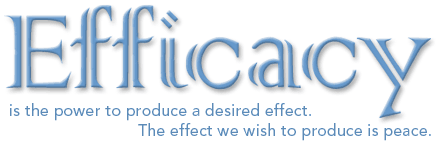 |
| Adam Baer at the Sunset Junction Organic Medicine dispensary |
There was a time when I despised the smell of marijuana; inconveniently, it coincided with my college years. So it would probably surprise those who knew me then as a violin-playing, straight-A student to discover that today, at 33, I cruise the streets of Los Angeles with a pot prescription. Then again, maybe it wouldn't. But it surprises me.
As the child of pianists who took trips to Carnegie Hall while others tripped out to The Doors, I always thought of marijuana as a "gateway drug", a bad weed that could only lead to suicide or, worse, failure in the arts. When I gave it more of a chance in my late twenties, it wasn't to boost "creativity". In fact, I don't even know if I like cannabis yet, given all of its strains and forms. Late last year, I simply began to experiment with it in search of relief for some vexing medical symptoms.
I was living in the right city at the right time, to be sure, but I lacked the positive – and extensive – marijuana history that so many of my peers enjoyed. In 1999, I took my first hit as a college junior from a pipe that belonged to my younger brother. At the time, I was feeling even more invincible than other young men: I had recently survived Hodgkin's disease and a stem-cell bone marrow transplant, following sub-lethal chemotherapy and a failed romance with an engineer. If I could endure such objective toxicity, I reasoned, something natural couldn't cause too much harm. I was right, but all I remember is coughing like an emphysema patient and obsessing about (imagined) cockroaches on my walls. A few years later, I tried pot again, while working in Manhattan as a music writer. But after a similarly bad experience at a Radiohead concert, with my undead pal the Maharishi, I ended the relationship.
Then my life changed dramatically: in 2005, after I moved to Los Angeles, I began to experience the onset of mysterious after-effects from my "cured" cancer, including peripheral nerve damage and a potentially malignant lesion in the base of my skull, something that few doctors could make sense of, much less treat.
Fortunately, California life proved to be therapeutic in itself: I found solace in the sylvan hills, the surf, the Pacific dolphins. My new crowd included more creative, fewer type-A people. And of course drugs were everywhere. The first day in my new apartment, I "lunched" at a neighbouring rocker's pad. In a scene like something out of Annie Hall, he offered me a dent out of a miniature Matterhorn of cocaine. Later that winter, I attended a Christmas party at the home of a wannabe-dancer-turned-television production assistant. Instead of the usual ornaments, her Christmas tree dangled bags of weed, joints and hash. "How'd she get all that stuff?" I asked a studio musician. "She goes to one of those, like, medical places. She's 'sick' with 'insomnia'."
 |
| At the Sunset Junction Organic Medicine dispensary |
"Opposite world" is how my New York-based brother described my new dimension. He was on to something. Not only did everyone seem to survive in this city without a job, but the green crosses on storefronts with signs reading "Compassionate Care Collective" weren't advertising chemists. It was a new century, and these were a new breed of "legal" medical marijuana dispensaries – stores that sold medically approved weed in California even though the drug was proscribed under US federal law.
http://www.ft.com/cms/s/2/b6ca6848-4764-11df-b253-00144feab49a.html


 As Matt Kelley
As Matt Kelley 
 The International Cannabis and Hemp Expo, the first trade show of its kind in the U. S. to permit on-site pot smoking, reportedly grabbed an estimated 15,000 enthusiasts to Daly City over the weekend.
The International Cannabis and Hemp Expo, the first trade show of its kind in the U. S. to permit on-site pot smoking, reportedly grabbed an estimated 15,000 enthusiasts to Daly City over the weekend.

 Klara Marosszeky has a vision for the future that involves revamping of the local farming industry to produce industrial hemp crops. Working with farmers, she has just harvested her first commercial crop of industrial hemp and is looking for innovators who want to utilize the product.
Klara Marosszeky has a vision for the future that involves revamping of the local farming industry to produce industrial hemp crops. Working with farmers, she has just harvested her first commercial crop of industrial hemp and is looking for innovators who want to utilize the product.

 Legalize Industrial Hemp for American Jobs and Prosperity
Legalize Industrial Hemp for American Jobs and Prosperity That is not all—the very best art and writing paper is made from hemp. The long fibers of the plant make it superior to wood in paper-making. That also means hemp paper-making requires less chemicals to produce. Indeed, the Constitution and Declaration of Independence both were originally drafted on hemp paper. These same long, strong fibers can be used to make clothes. Hemp clothes used to be coarse, but thanks to new processes for hemp it is now possible to make hemp shirts and pants as comfortable and absorbent as cotton, using less than 1% of the oil, fertilizers and pesticides to produce.
That is not all—the very best art and writing paper is made from hemp. The long fibers of the plant make it superior to wood in paper-making. That also means hemp paper-making requires less chemicals to produce. Indeed, the Constitution and Declaration of Independence both were originally drafted on hemp paper. These same long, strong fibers can be used to make clothes. Hemp clothes used to be coarse, but thanks to new processes for hemp it is now possible to make hemp shirts and pants as comfortable and absorbent as cotton, using less than 1% of the oil, fertilizers and pesticides to produce.




